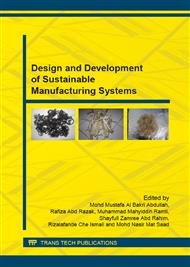p.403
p.408
p.413
p.417
p.421
p.429
p.434
p.439
p.444
Effectiveness of Safety Management in Oil and Gas Project
Abstract:
The industry of oil and gas will be always constantly adapting to changes over time, whether in terms of technology, market demands or price thus increase the operational risk and danger in the operation. The purpose of this research is to study on the current practices of safety management implemented in the upstream part in the industry and its effectiveness, altogether to emphasize on the importance of safety management system in the industry. This research focus on the implemented safety management in upstream sector of oil and gas industry especially in PETRONAS Carigali Sdn. Bhd in Malaysia and evaluate and investigate its effectiveness. Questionnaire survey is conducted regarding safety and the data and results gained from the survey are analysed using the Relative Importance Index (RII) and also by using Average Index (AI). The research put safety management as the main factor in preventing and reducing accidents and incidents to occur in industries of the oil and gas and emphasize on awareness and importance of managing safety in oil and gas industry.
Info:
Periodical:
Pages:
429-433
Citation:
Online since:
November 2015
Authors:
Price:
Сopyright:
© 2015 Trans Tech Publications Ltd. All Rights Reserved
Share:
Citation:


